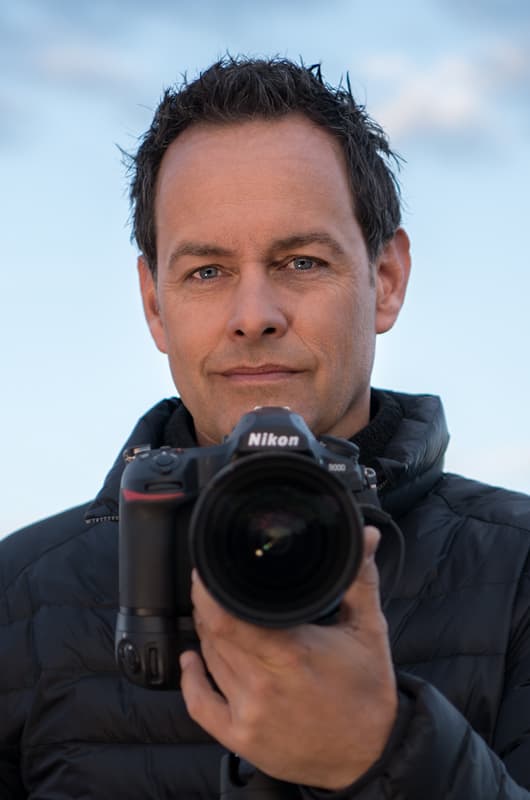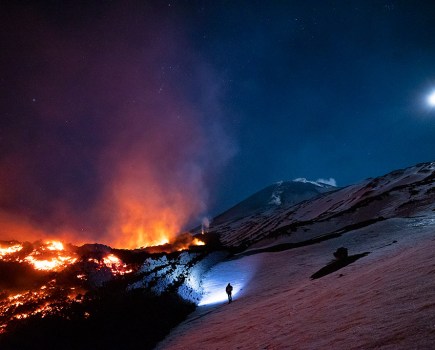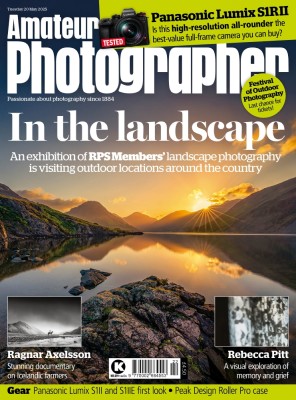In his latest column for AP, top nature photographer Marsel van Oosten explains the importance of scale in pictures
When I was in art school, back in the late ’80s, I came into contact with the work of Caspar David Friedrich. He was a 19th-century German Romantic landscape painter who was known for placing contemplative figures silhouetted against night skies, morning mists, barren trees or gothic ruins. His primary interest was the contemplation of nature.
This approach made such an impression on me that I started to introduce human elements into my landscape photography. At the time, very few landscape photographers did this, but it turns out that I was ahead of my time – scroll through Instagram and you’ll see that this has become the norm. Including a human or a wildlife element gives scale to the landscape.

The Grand Tsingys of Bemaraha National Park, Madagascar. Nikon Z 7, AF-S 14-24mm f/2.8, 1sec at f/11, ISO 100, FTZ mount adapter
Photographers often forget that viewers may not always know the location they have photographed, and may be unfamiliar with the scale of the rocks, trees or mountains.
I first became aware of this when I visited Arches National Park in Utah, USA. I love rock arches, so the park had been on my list for a long time and I had done extensive research. Near the top of my list was Turret Arch framed by North Window. I had seen a couple of photographs of this scene and decided I was going to try it differently and shoot it in winter, with snow.
In winter the park is more quiet and the light is much better. When I finally stood in front of North Window, I was blown away – what I thought was a small opening in a rock wall turned out to be massive. The reason for my misconception was that none of the images I had seen included a reference for scale. Seeing how big the window actually was in real life, I knew I had to include a human element to give a sense of scale.
Doing this instantly made the image much more impressive, and more original. Not only that, it made it easier for the viewer to connect to the image, and it added a sense of adventure – all improvements on what I had seen before.
A few years ago, I was contacted by Nikon to take some prototypes of the Z 7 to a destination of my choice in order to discover and show how sharp their new mirrorless camera system was. I decided to test the camera in the sharpest landscape I knew… the Tsingy de Bemaraha National Park in Madagascar. Tsingy is Malagasy for ‘where one cannot walk barefoot’ – that’s how sharp these unique forests of razor-sharp limestone pinnacles are.

Turret Arch framed by North Window, Arches National Park, Utah, USA. Nikon D3S, AF-S 24-70mm f/2.8, 1/320sec at f/11, ISO 200
I was aware that most people would not fully appreciate the size of this rugged landscape, so I decided to add a reference for scale: a climber. Not only did this result
in original images of this location but, without it, it would have been impossible to appreciate the grandeur of the landscape, and the image would have lacked the sense of adventure it has. During one of the CES trade shows in Las Vegas, Nikon used a 30ft wide enlargement of this image. Although I didn’t get to see it in person, Nikon sent me pictures that gave me a sense of how large they’d reproduced it.
As told to Steve Fairclough
Marsel van Oosten

Marsel van Oosten was born in The Netherlands and worked as an art director for 15 years. He switched careers to become a photographer and has since won Wildlife Photographer of the Year and Travel Photographer of the Year. He’s a regular contributor to National Geographic and runs nature photography tours around the world. Visit www.squiver.com
Further reading
Marsel van Oosten: how to pre-visualise a photograph
Marsel van Oosten: making the most of bad weather









